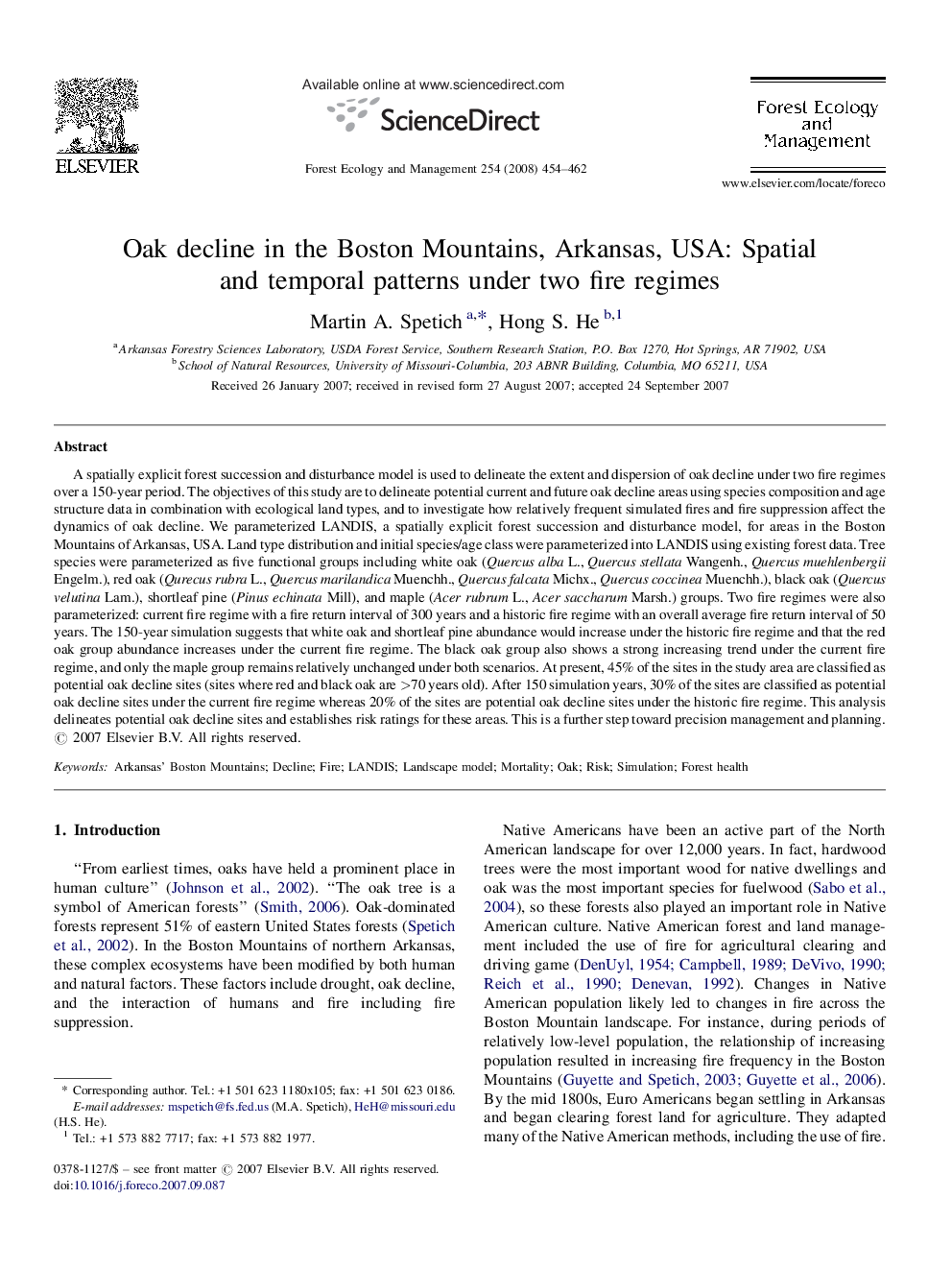| کد مقاله | کد نشریه | سال انتشار | مقاله انگلیسی | نسخه تمام متن |
|---|---|---|---|---|
| 90029 | 159362 | 2008 | 9 صفحه PDF | دانلود رایگان |

A spatially explicit forest succession and disturbance model is used to delineate the extent and dispersion of oak decline under two fire regimes over a 150-year period. The objectives of this study are to delineate potential current and future oak decline areas using species composition and age structure data in combination with ecological land types, and to investigate how relatively frequent simulated fires and fire suppression affect the dynamics of oak decline. We parameterized LANDIS, a spatially explicit forest succession and disturbance model, for areas in the Boston Mountains of Arkansas, USA. Land type distribution and initial species/age class were parameterized into LANDIS using existing forest data. Tree species were parameterized as five functional groups including white oak (Quercus alba L., Quercus stellata Wangenh., Quercus muehlenbergii Engelm.), red oak (Qurecus rubra L., Quercus marilandica Muenchh., Quercus falcata Michx., Quercus coccinea Muenchh.), black oak (Quercus velutina Lam.), shortleaf pine (Pinus echinata Mill), and maple (Acer rubrum L., Acer saccharum Marsh.) groups. Two fire regimes were also parameterized: current fire regime with a fire return interval of 300 years and a historic fire regime with an overall average fire return interval of 50 years. The 150-year simulation suggests that white oak and shortleaf pine abundance would increase under the historic fire regime and that the red oak group abundance increases under the current fire regime. The black oak group also shows a strong increasing trend under the current fire regime, and only the maple group remains relatively unchanged under both scenarios. At present, 45% of the sites in the study area are classified as potential oak decline sites (sites where red and black oak are >70 years old). After 150 simulation years, 30% of the sites are classified as potential oak decline sites under the current fire regime whereas 20% of the sites are potential oak decline sites under the historic fire regime. This analysis delineates potential oak decline sites and establishes risk ratings for these areas. This is a further step toward precision management and planning.
Journal: Forest Ecology and Management - Volume 254, Issue 3, 10 February 2008, Pages 454–462